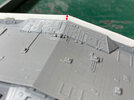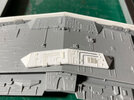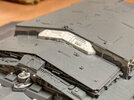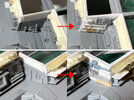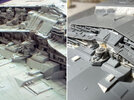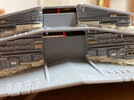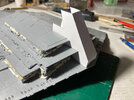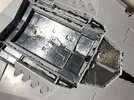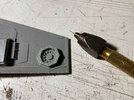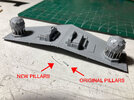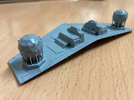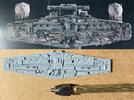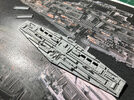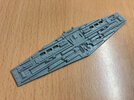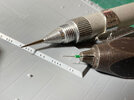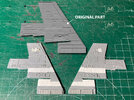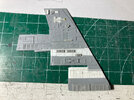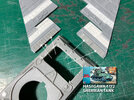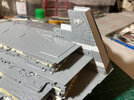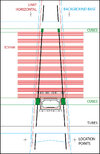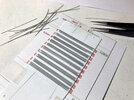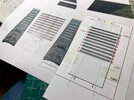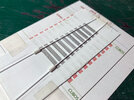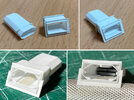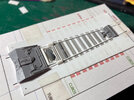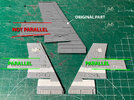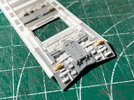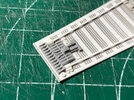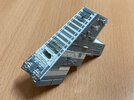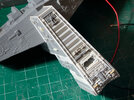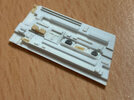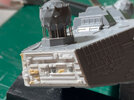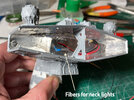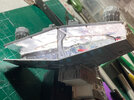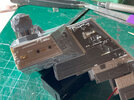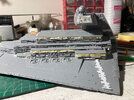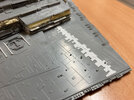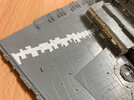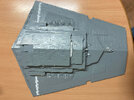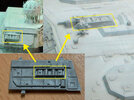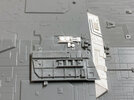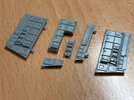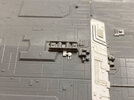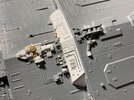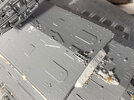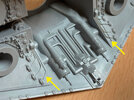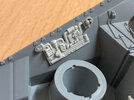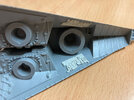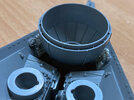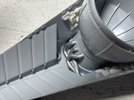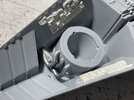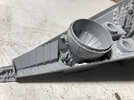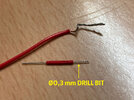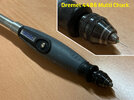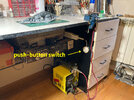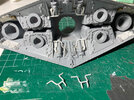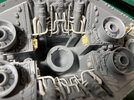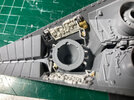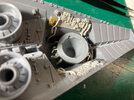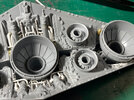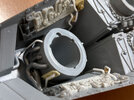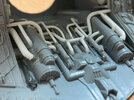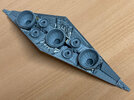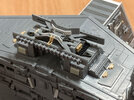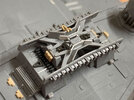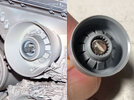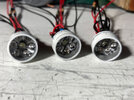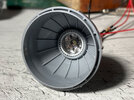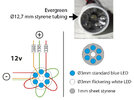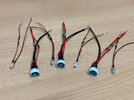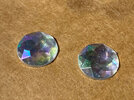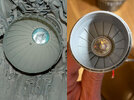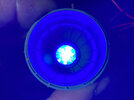Moska
Sr Member
Hello friends.
I always wanted to make a Star Destroyer model, but the only kit on the market was the AMT one and... it's just too bad.
The possibility of doing it from scratch didn't work for me either because the amount of work required scared me a lot.
Fortunately -finally!!- the Bandai and Zvezda/Revell kits were released on the market. I haven't gotten my hands on the Bandai kit, but I think it's very good in detail and proportions. But the problem is its size. To represent such a large spaceship, Bandai's scale seems too small to me and I don't like it.
The Revell kit seemed like the best option to me. Its size is considerable and its detail, although not as good as Bandai's, is much better than the ridiculous details (lumps) of the AMT kit. When I saw a photo of the front bridge piece I fell in love with this kit and knew it had to be mine.
But love stories are never as beautiful as they first seem, and now I'm quite angry with this kit for its obvious flaws. As is already known, the kit is very “crushed”. It lacks height in the side trenches and in the superstructure. Additionally, the angle of the bridge must be corrected.
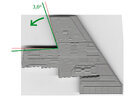
I spent many years building old AMT Star Wars kits. Those kits had so many defects that they helped me learn new techniques and gain experience. They were a good modeling school for me. I understand that those kits were manufactured “in a hurry” and intended more as merchandising than as serious scale models. But it is very difficult for me to understand and it makes me angry that a kit as modern as Revell's once again forces me to invest hours and hours of work to correct its errors.
And now to the mess.
Once the heights that had to be added in different areas of the kit had been decided, I also had to think about how I was going to detail these new surfaces. My intention is not to modify too much the details that the kit includes. Just introduce some specific improvements. So I made a silicone mold and polyurethane resin copies of some of the parts of the kit that have the most details. Since I don't have a vacuum chamber, I was very worried that the resin would not fill all those small details of the mold, leaving air bubbles that would ruin the piece. But the talcum powder trick worked wonders and the pieces came out perfect.
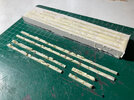
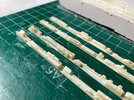
I use those copies to extract different parts from them and use them to detail the areas where I have increased the height. I also use styrene sheets and leftover pieces from other kits for this purpose.
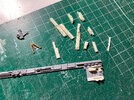
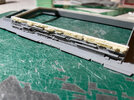
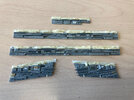
At the same time that I am finishing those side pieces, I am also making the holes for the fiber optics. This is how I do it in parts and I don't leave that tedious task to do it all at once. I am using 0.3mm drill bits to lay 0.25mm fiber optics. Although I have small pen type electric drills, those bits break too easily with those tools. So I'm doing them manually. First I make some incisions with a very sharp awl and being very careful so that they are as aligned as possible. And then I make the holes with a manual drill chuck, avoiding sudden movements. Still, it is inevitable that drill bits break from time to time. I am waiting for an order of 40 0.3mm drill bits to arrive and I hope they will be more than enough to complete the job.
These pieces have to be glued onto another layer of plastic, which doubles their thickness and makes the job of making the holes even more complicated. To avoid this, after making the holes in each piece, I scan it from the back and draw some templates on my computer that, once printed, help me make all the necessary openings in the place where the pieces are going to be glued. This way, the optical fiber passes smoothly into the model and I avoid having to drill through that extra layer of plastic with the 0.3 mm drill bit.
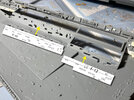
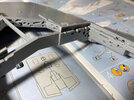
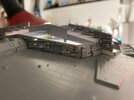
My intention is not to use the technique of creating large skeins of fiber to carry each one to the light source. I will place all the LED strips that I consider necessary inside the model and use small pieces of fiber. I have used this technique before and I like the result. I know that in the IL&M models they did it the other way, but you have to keep in mind that in the 70s there were no LED strips.
Thanks for looking.
Rafa
I always wanted to make a Star Destroyer model, but the only kit on the market was the AMT one and... it's just too bad.
The possibility of doing it from scratch didn't work for me either because the amount of work required scared me a lot.
Fortunately -finally!!- the Bandai and Zvezda/Revell kits were released on the market. I haven't gotten my hands on the Bandai kit, but I think it's very good in detail and proportions. But the problem is its size. To represent such a large spaceship, Bandai's scale seems too small to me and I don't like it.
The Revell kit seemed like the best option to me. Its size is considerable and its detail, although not as good as Bandai's, is much better than the ridiculous details (lumps) of the AMT kit. When I saw a photo of the front bridge piece I fell in love with this kit and knew it had to be mine.
But love stories are never as beautiful as they first seem, and now I'm quite angry with this kit for its obvious flaws. As is already known, the kit is very “crushed”. It lacks height in the side trenches and in the superstructure. Additionally, the angle of the bridge must be corrected.

I spent many years building old AMT Star Wars kits. Those kits had so many defects that they helped me learn new techniques and gain experience. They were a good modeling school for me. I understand that those kits were manufactured “in a hurry” and intended more as merchandising than as serious scale models. But it is very difficult for me to understand and it makes me angry that a kit as modern as Revell's once again forces me to invest hours and hours of work to correct its errors.
And now to the mess.
Once the heights that had to be added in different areas of the kit had been decided, I also had to think about how I was going to detail these new surfaces. My intention is not to modify too much the details that the kit includes. Just introduce some specific improvements. So I made a silicone mold and polyurethane resin copies of some of the parts of the kit that have the most details. Since I don't have a vacuum chamber, I was very worried that the resin would not fill all those small details of the mold, leaving air bubbles that would ruin the piece. But the talcum powder trick worked wonders and the pieces came out perfect.


I use those copies to extract different parts from them and use them to detail the areas where I have increased the height. I also use styrene sheets and leftover pieces from other kits for this purpose.



At the same time that I am finishing those side pieces, I am also making the holes for the fiber optics. This is how I do it in parts and I don't leave that tedious task to do it all at once. I am using 0.3mm drill bits to lay 0.25mm fiber optics. Although I have small pen type electric drills, those bits break too easily with those tools. So I'm doing them manually. First I make some incisions with a very sharp awl and being very careful so that they are as aligned as possible. And then I make the holes with a manual drill chuck, avoiding sudden movements. Still, it is inevitable that drill bits break from time to time. I am waiting for an order of 40 0.3mm drill bits to arrive and I hope they will be more than enough to complete the job.
These pieces have to be glued onto another layer of plastic, which doubles their thickness and makes the job of making the holes even more complicated. To avoid this, after making the holes in each piece, I scan it from the back and draw some templates on my computer that, once printed, help me make all the necessary openings in the place where the pieces are going to be glued. This way, the optical fiber passes smoothly into the model and I avoid having to drill through that extra layer of plastic with the 0.3 mm drill bit.



My intention is not to use the technique of creating large skeins of fiber to carry each one to the light source. I will place all the LED strips that I consider necessary inside the model and use small pieces of fiber. I have used this technique before and I like the result. I know that in the IL&M models they did it the other way, but you have to keep in mind that in the 70s there were no LED strips.
Thanks for looking.
Rafa

